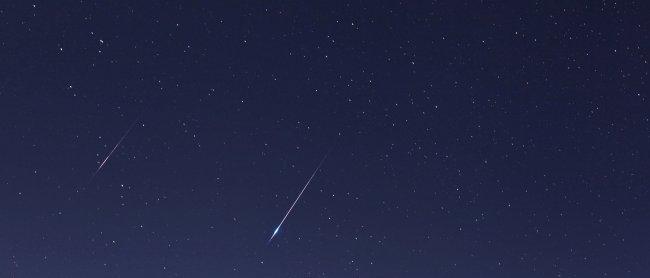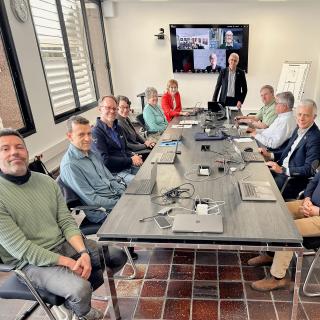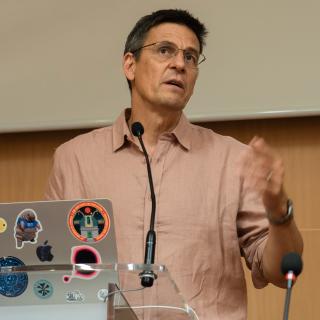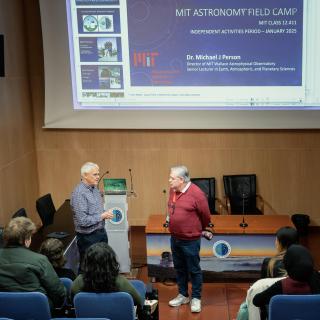As happens every year, the Perseids, also known as “Saint Lawrence’s tears” reach their peak of activity around the middle of August. This year the activity of the Perseids extends from 17th July until 24th August. The maximum is expected for 01:00 UT on August 13th so that in Europe the nights of 11th to 12th and 12th to 13th of August will be the best times to observe this meteor shower.
Because it is new moon, we will be able to see a fair number of meteors, some of them very bright, due to the high speeds at which they will enter the atmosphere. On average we should be able to see a meteor every two minutes, if we are in a place with no light pollution and with clear horizons. According to Miquel Serra-Ricart, an astronomer at the IAC, “This year, at last, we will have a very dark night because there will be no moon. If we are in a place without light pollution and (of course) not cloudy, we will see a spectacle in the sky.
A shower with a history
The so-called “shooting stars” are tiny dust particles, of various sizes, some of them smaller than grains of sand, which are left behind by comets or asteroids as they orbit round the sun. The cloud of such particles (called meteoroids), as they are heated by the Sun, are dispersed around the comet’s orbit, which is crossed every year by the Earth in its orbit round the Sun. During this encounter the dust particles disintegrate as they enter the terrestrial atmosphere, producing the well known tracks of light whose scientific name is “meteors”.
The Perseid activity originates in the comet Swift-Tuttle, discovered in 1862. It has a diameter of some 26 km, and is currently the biggest object which makes periodic approaches to the Earth.
According to calculations using standard models, the Perseids activity reaches around 100 meteors per hour (ZHR, Zenith hourly rates). In the years close to the perihelion of Swift-Tuttle, that is when it is at its minimum distance from the Sun, (the last was in 1992 and the next will be in 2126) the activity can increase to reach 400-500 meteors per hour, because of the high density of the meteoroids which surround and accompany the comet. However, the Perseids are known for their “outbursts of activity” caused by the gravitational influence of Jupiter and Saturn on the clouds of dust ejected by the comet in the past.
In 1839 the German observer E. Heis counted for the first time the maximum of the Perseids, at 160 meteors per hour. Afterwards, until 1858, this varied between 37 and 88 meteors/hour. In 1920 the Perseids reached a maximum of 200 meteor/hour and 187 in 1983. “Although this year we don’t predict a significant increase in activity the Perseids have never been disappointing” says Serra-Ricart, and he adds “Since 2013, and thanks to the good conditions at the Teide Observatory , we have been able to observe the shower continuously every year and every year we have witnessed an attractive spectacle in the sky. This year, at new moon, we will be able to detect fainter Perseids. In fifteen minutes I’m sure that we will count them in tens if we can keep looking at a fixed point in the sky”.
Families counting meteors
During every meteor shower amateur astronomers make meteor counts, and they send them to the International Meteor Organization (IMO) to calculate the activities of the showers. For the 2018 Perseids the Instituto de Astrofísica de Canarias (IAC) and the Polytechnic University of Madrid (UPM) have united to produce the citizen science project Contadores de Estrellas. Counters of Stars, funded by the FECYT ( Spanish Foundation for Science and Technology). Together they have produced a didactic activity in which any citizen can collaborate in making these counts.
The guide descibes the procedure to follow via certain apps, which have to be previously installed on their cellphones, and using very simple material. The challenge is to procure that, in a very simple way, the general public can participate and understand this astronomical phenomenon, as well as other features of the sky which are explained in the guide. This is designed to be carried out in the family, or in teams, because the event occurs, usually, during the holidays and it is usual for citizeds to take advantage of the opportunity to observe.
The project also includes a photography competition which will allow citizens to share their photos of the night of the Perseids and win prizes related to astronomy.
Live from the Teide Observatory and El Anillo
Within the Light Pollution Initiatives (LPI) the European STARS4ALL project (star4all.eu) and with the collaboration with the General Directorate of Tourism of the Junta of Extremadura, the sky-live.tv channel will broadcast live the meteor shower using two cameras, one in the Observatorio del Teide (Izaña, Tenerife, Canary Islands) of the IAC, and the other at El Anillo (International Centre for Innovative Sports in the Environment, Junta of Extremadura, Caceres).
The appointment is next Sunday, 12th August at 23:15 UT ( 13th August 00:15 local time in the Canaries, 01:15 CEST, European local time).
Interesting information:
- “Contadores de Estrellas is a project which has been funded by the Fundación Española para la Ciencia y la Tecnología (FECYT) of the Ministry of Science, Innovation and Universities.
- STARS4ALL is a project funded by the H2020 Programme of the European Union under the agreement 688135. STARS4ALL includes 8 institutions (UPM, CEFRIEL, SOTON, ECN, ESCP Europe, IAC, IGB, UCM) in 6 countries.
- Extremadura Buenas Noches is a project with the Night-time Strategy of the Junta of Extremadura (Extremadura 2030).
- Three Spanish Supercomputer centres, the Extremadura Centre for Advances Technologies (CETA-CIEMAT), the Consortium of University Servers of Catalonia (CSUC) and the Instituto de Astrofísica de Canarias (IAC) will collaborated to distribute the broadcast in the web portal (sky-live.tv).
More information: https://www.imo.net/viewing-the-perseid-meteor-shower-in-2018/
Audiovisual material:
Sequences of the best Perseids 2016 and 2017:
High resolution images of Meteor Showers
See also: Guide to Observe the Perseids



